Top 10 Longest Rivers in Finland
From the north, that is, from the Swedish border, Finland has rivers that drain into the Baltic Sea. Water flows straight from Finland into the Baltic Sea, ... read more...which is separated here into the Gulfs of Bothnia and Finland, as well as the Archipelago Sea. Let's have a look at longest rivers in Finland.
-
The Torne River, sometimes known as the Tornio, is a river in northern Sweden and Finland (Finnish: Tornionjoki, Swedish: Torne älv, Torneälven, Northern Sami: Duortneseatnu, Meänkieli: Tornionväylä). It defines the boundary between these two nations for almost half of its length.
It begins near the Norwegian border at Lake Torne (Swedish: Torneträsk) and runs southeast for 522 kilometers (324 miles) into the Gulf of Bothnia. By both length and watershed area, it is Norrbotten's longest river. Lake Torne (Swedish: Torneträsk) near the Norwegian border is said to be the source of the Torne. However, Abiskojkka, which flows out of Abiskojaure and is mostly supplied by Kamajkka, which flows from Lake Gamajávri, is the lake's major feeder.
According to official Swedish maps, the Torne River originates from Lake Válfojávri in Norway's Nordland Fylke, however it is joined by an unnamed, longer stream near the lake, which is supplied by a tiny glacier. The river runs south along the Finno-Swedish border from here. Meänmaa is the name given to this area, which is a famous tourist attraction. A border-crossing bridge on a road heading to Kolari, just south of Pajala, is the eighth bridge over the main river from the source. The river continues to Kassa village. This is considered one of the longest rivers in Finland.Length: 510 km
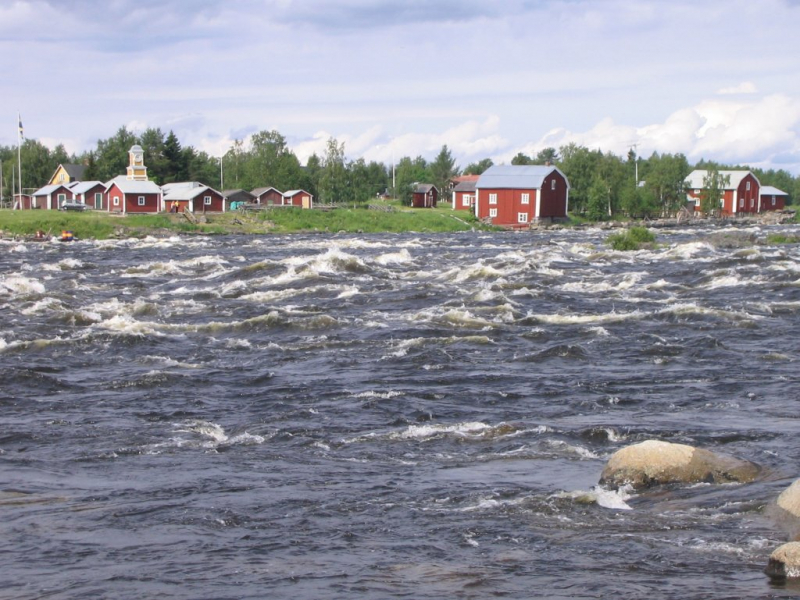
https://en.wikipedia.org/wiki/Torne_(river) 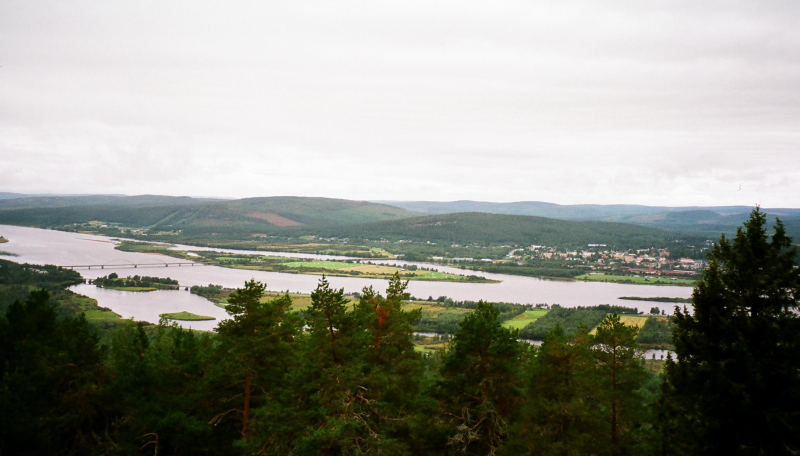
https://en.wikipedia.org/wiki/Torne_(river) -
With a length of 550 kilometers (340 miles), the Kemijoki River (Swedish: Kemi älv, Northern Sami: Giemajohka) is Finland's longest river. Before reaching the Gulf of Bothnia in Kemi, it passes through Kemijärvi and Rovaniemi. The Ounasjoki and Kemijoki River meet at Rovaniemi.
In 1949, the first hydroelectric plant on Kemijoki was built in Isohaara. So far, a total of 15 power plants have been built. Kemijoki Oy and Pohjolan Voima Oy are the owners of the factories. The plants generated 4.3 TWh in 2003, accounting for around 34.5 percent of Finland's total hydroelectric production.
The Isohaara power plant, which was finished at the river's mouth in 1949, was followed by 20 more power plant dams, which buried multiple rapids beneath their basins. At the same time, these building operations have decimated the river's salmon supply, which was once among Europe's wealthiest.
Following that, intensive fry-stocking procedures were used to keep the stock alive. Migratory fish may already flow through the Isohaara site via a fishway, and it is hoped that migration to the confluence with the River Ounasjoki will be feasible in the future. This is considered one of the longest rivers in Finland.
Length: 550 km
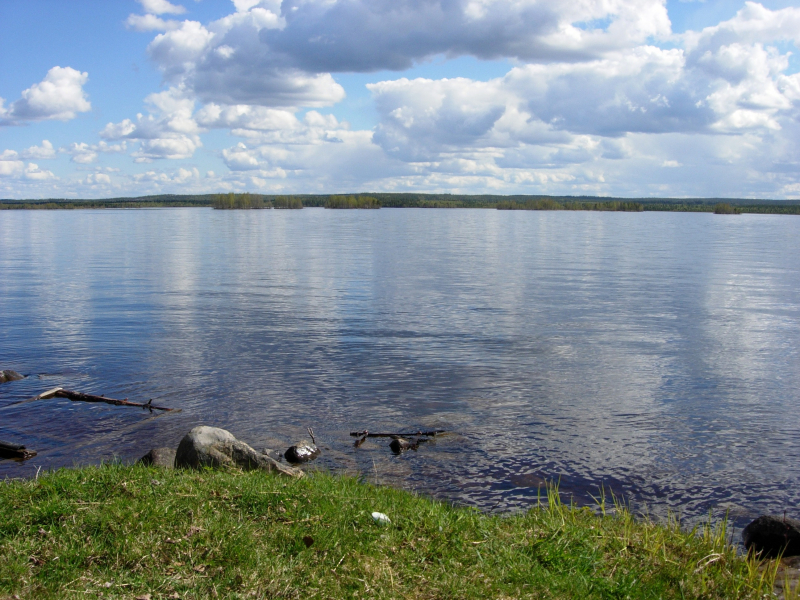
https://c.stocksy.com/ 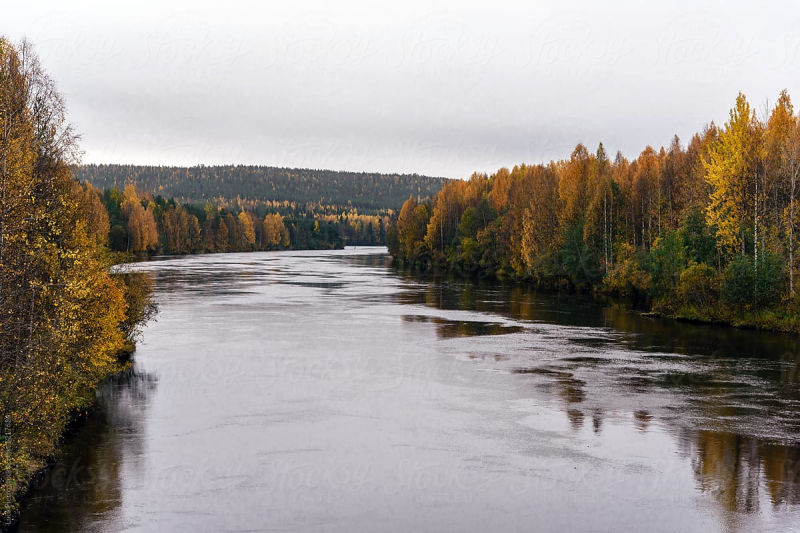
https://c.stocksy.com/ -
The Ounasjoki River (Northern Sami: Ovnnesjohka) is Finland's longest single river tributary and the greatest tributary of the Kemijoki. It's also the country's biggest river that runs wholly inside its boundaries. Ounasjoki is 299.6 kilometers (186.2 miles) long, with a catchment area of 13,968 square kilometers (5,393 square miles), accounting for 27 percent of the Kemijoki catchment area.
The Ounasjoki River originates at Enontekiö's Ounasjärvi lake. After passing through Periläjärvi lake, it travels east for about seven kilometers before turning south. The river then travels south-southeast till it reaches Rovaniemi, where it meets the Kemijoki. A frozen stream is similar to any other, except that it may be walked on in numerous locations.
The point is, you'll particularly like the sleigh ride you may take on it, as well as the sauna and subsequent plunge into the icy river. The cold water spa, which is a hole dug in the river, is depicted in one of the images. This is the place to go if you're looking for a thrill. This is considered one of the longest rivers in Finland.
Length: 300 km
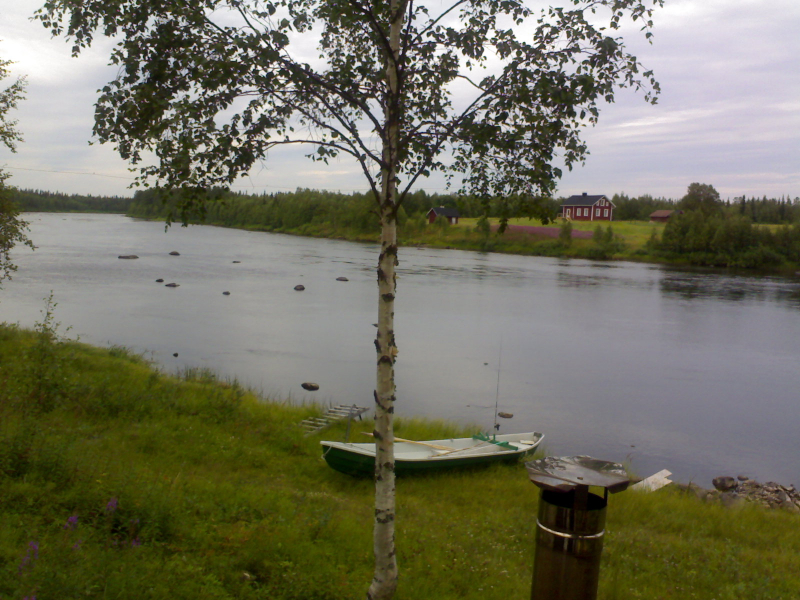
https://en.wikipedia.org/wiki/Ounasjoki 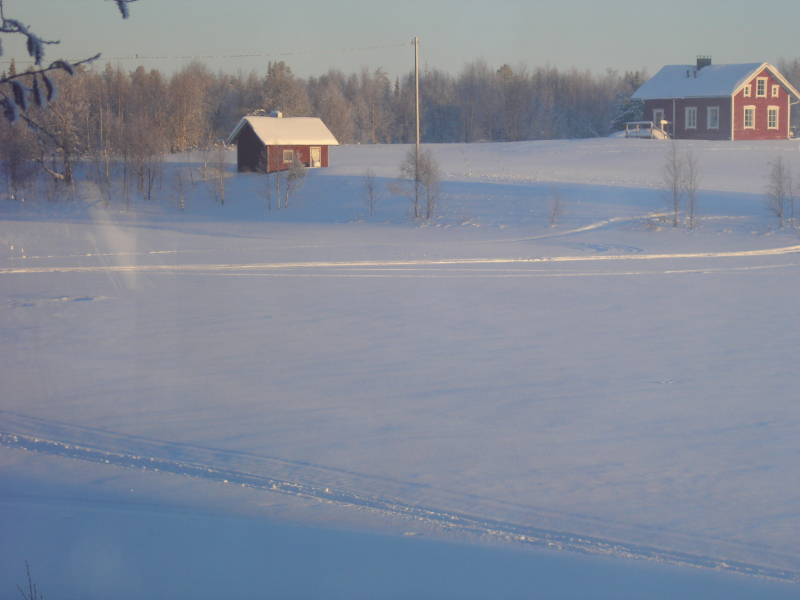
https://en.wikipedia.org/wiki/Ounasjoki -
The Vuoksi River is a river that runs from Lake Saimaa in southeastern Finland to Lake Ladoga in northwestern Russia in the northernmost region of the Karelian Isthmus. The river reaches Lake Ladoga in three branches: an older major northern branch at Priozersk (Käkisalmi), a minor branch a few kilometers north of it, and a new southern branch, the Burnaya River, which has become the mainline in terms of water discharge, 50 kilometers (31 mi) southeast.
The former northern distributaries have only drained the lower sections of the Vuoksi basin since 1857, and they are not supplied by Lake Saimaa. The northern and southern branches are essentially two independent river systems that might become separated during dry seasons.
The Vuoksi River is known for its rapids, such as Imatrankoski in Imatra and rapids near Losevo hamlet (Kiviniemi). Losevo is a popular location for kayak, canoe, and catamaran contests because of the quick convergence of the Vuoksi and Suvanto/Lake Sukhodolskoye.A project to destroy the rapids at Losevo and turn the River Burnaya, Lake Sukhodolskoye, and lower portions of Vuoksi into a navigable canal is currently being discussed in Russia, which would connect Lake Ladoga to the Gulf of Finland and allow oil tankers to bypass the River Neva and the city of Saint Petersburg.
Length: 162 km
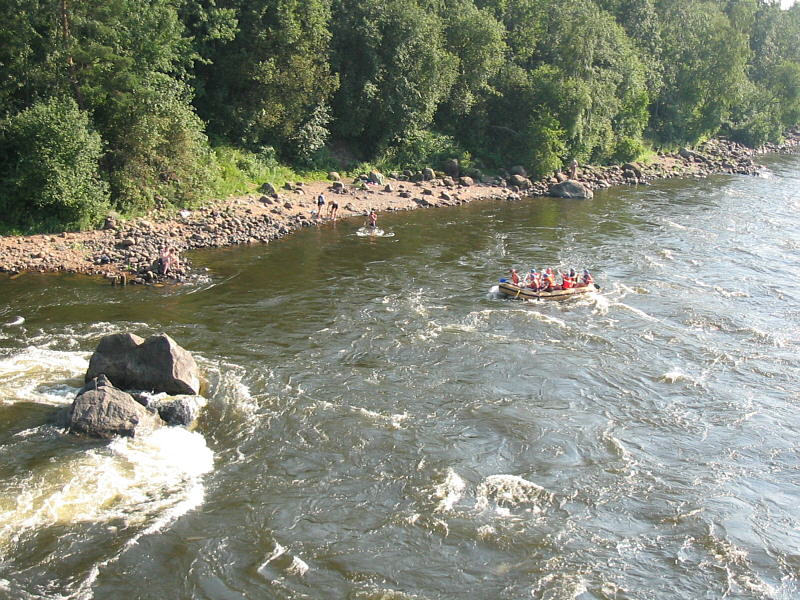
https://en.wikipedia.org/wiki/Vuoksi 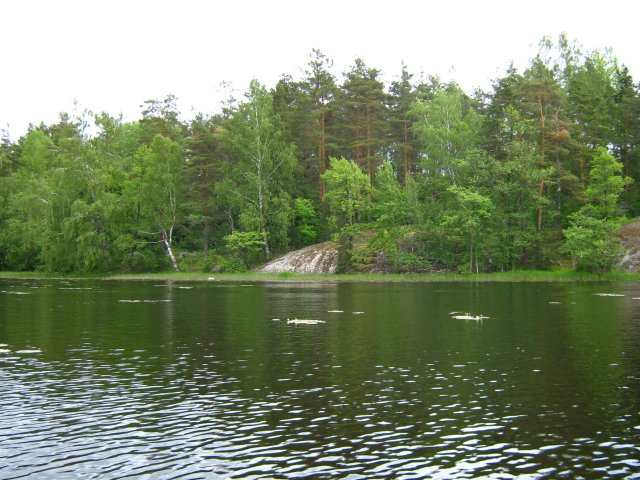
https://en.wikipedia.org/wiki/Vuoksi -
Oulujoki River is a river in Finland's Oulu province. Its name translates to "Oulu River" (Swedish: Ule älv) in Finnish, and originally meant "Flood River" in ancient Northern Ostrobothnian dialect. Its source is Oulujärvi, and its watershed area encompasses a large portion of the Kainuu region.
At Oulu, it empties into the Bothnian Bay. The port of Oulu is located near the river's mouth. The Oulujoki River is one of Finland's major rivers. It begins in Lake Oulujärvi and travels over 100 kilometers to Oulu and the Gulf of Bothnia, passing through Muhos. For thousands of years, the Oulujoki river has served as a vital trading and transportation route for the inhabitants of the area.
Oulujoki River is also the most well-known route for delivering tar in Finland and Europe. Today, the river generates enormous amounts of hydroelectric electricity on a national scale, as well as enough fish to meet fishing demands. Because of its nutrient-rich soil and favorable microclimate, the river valley is also an important agricultural area. The Oulujoki river is fed by several tributaries, the largest of which are the Kutujoki, Utosjoki, and Muhosjoki rivers.
Length: 107 km
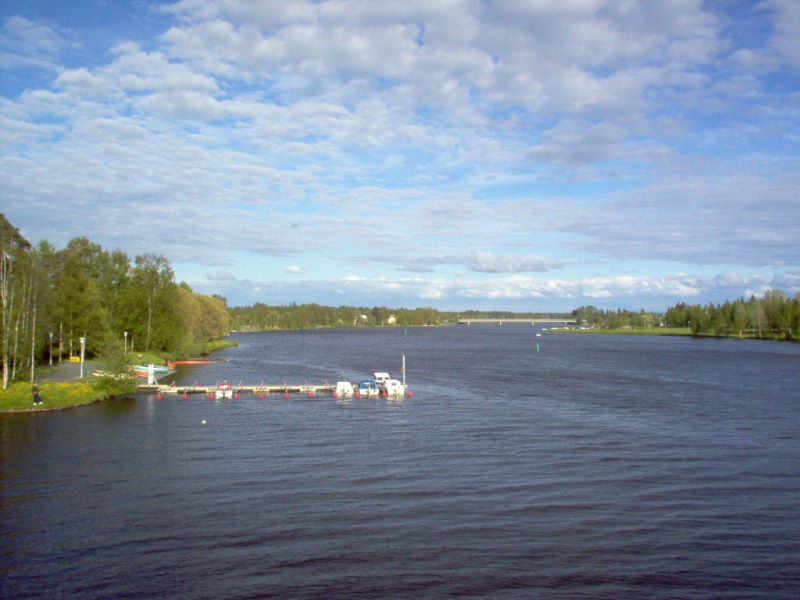
https://en.wikipedia.org/ 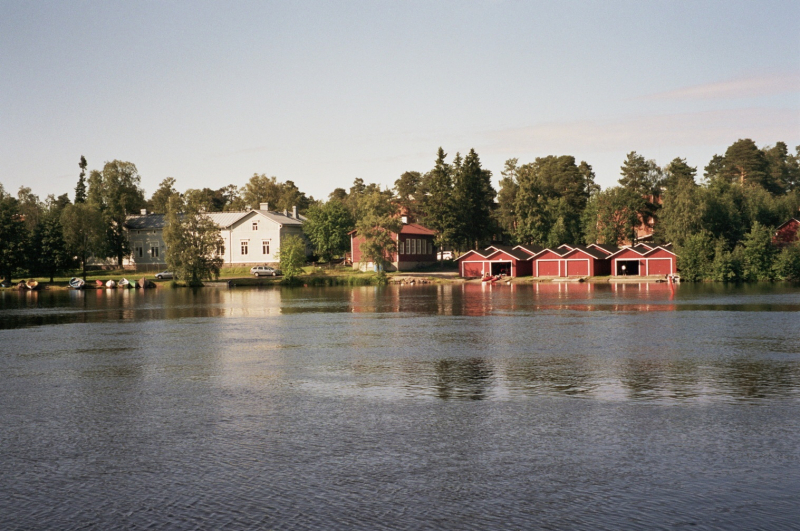
https://en.wikipedia.org/ -
The Vantaa River (Finnish: Vantaanjoki, Swedish: Vanda) is a river in southern Finland that runs for 101 kilometers (63 miles). The river goes from Lake Erkylänjärvi in Hausjärvi to Vanhankaupunginselkä in Helsinki, where it empties into the Gulf of Finland.
Keravanjoki, a tributary of the Vantaa river that runs through Kerava, north of Helsinki, is one of its tributaries. If the Päijänne Water Tunnel has to be repaired, the country's capital, Helsinki, draws water from the Vantaa river as a backup water supply. At the mouth of Vantaanjoki, Helsingin Energia, a Helsinki-based energy corporation, has a functional power station museum.
The Vanhakaupunki Hydropower Plant generates 500 MWh per year on average. The river comes alive in the summer, giving one of the greatest riding routes in the area, with bike tracks running along both sides. Anglers, kayakers, and picnickers, as well as swimmers and sunbathers, flock to the area's sandy beaches.
Length: 101 km
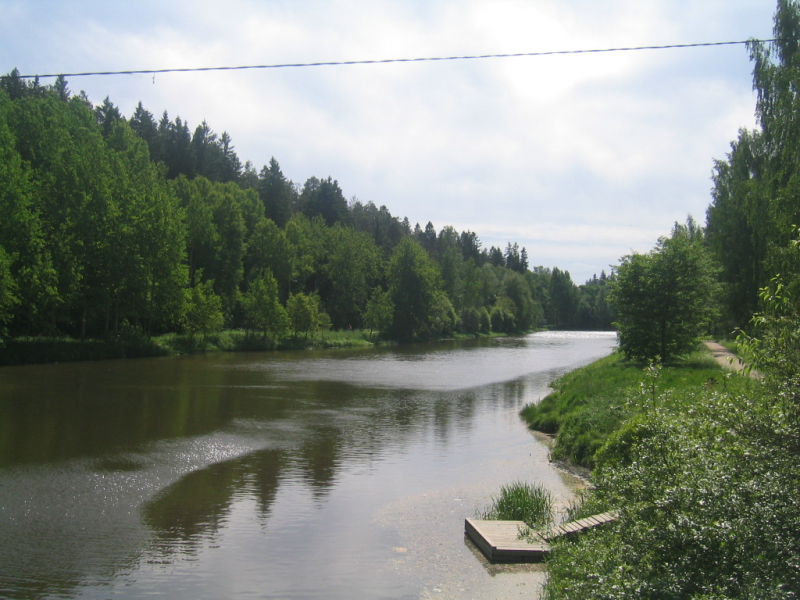
https://en.wikipedia.org/wiki/Vantaa_(river) 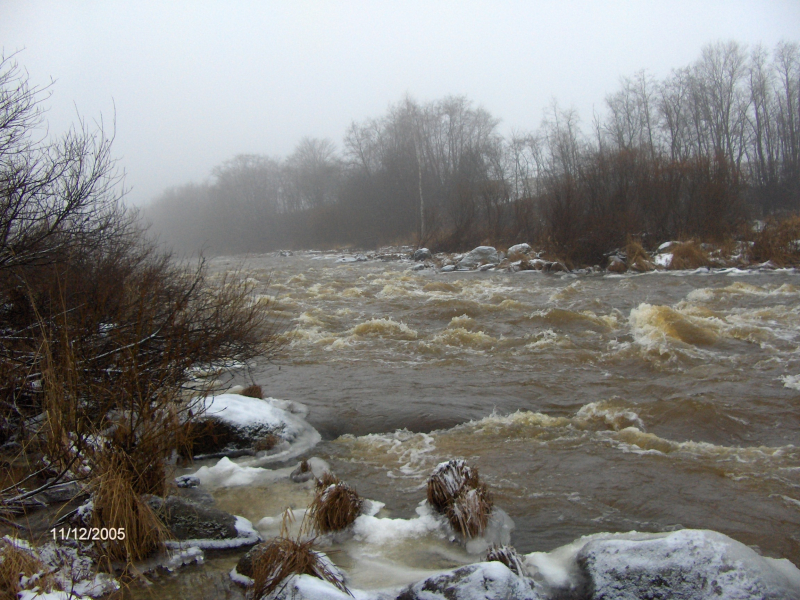
https://en.wikipedia.org/wiki/Vantaa_(river) -
The Eura River (Finnish: Eurajoki, Swedish: Eura) is a river in the Satakunta area of south-western Finland. Its source is Lake Pyhäjärvi, and it travels through Eura and Eurajoki municipalities before emptying into the Bothnian Sea. The Eura is 53 kilometers long in total (33 mi). It includes eleven rapids and three small hydroelectric power units with a 0.1–0.5 MW installed capacity.
The Köyliö, which begins at Lake Köyliö and runs for 23 kilometers, is the longest tributary of Eura River. Since the Viking Age, the Eura has been an important river linking the agricultural hinterland to the Baltic Sea. Eura had the largest and most notable Bronze and Iron Age communities in Finland.
The river is the outlet of Lake Pyhajarvi, which is 44.9 meters high. He runs northerly and goes through the towns of Eura and Kiukainen after leaving it on its northern shore. At the mouth of the right tributary Köyliönjoki, the Eurajoki bends west. The river flows past the same little village of Eurajoki and into the Gulf of Bothnia a few kilometers west of the bay of Eurajoensalmi. The river Eurajoki is 52 kilometers long and drains a 1336-square-kilometer region.
Length: 53 km
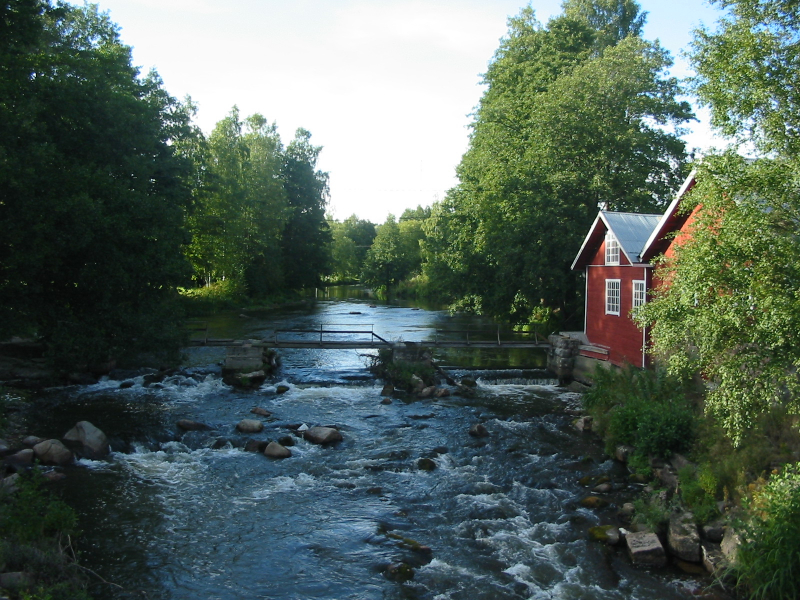
https://www.wikidata.org/ 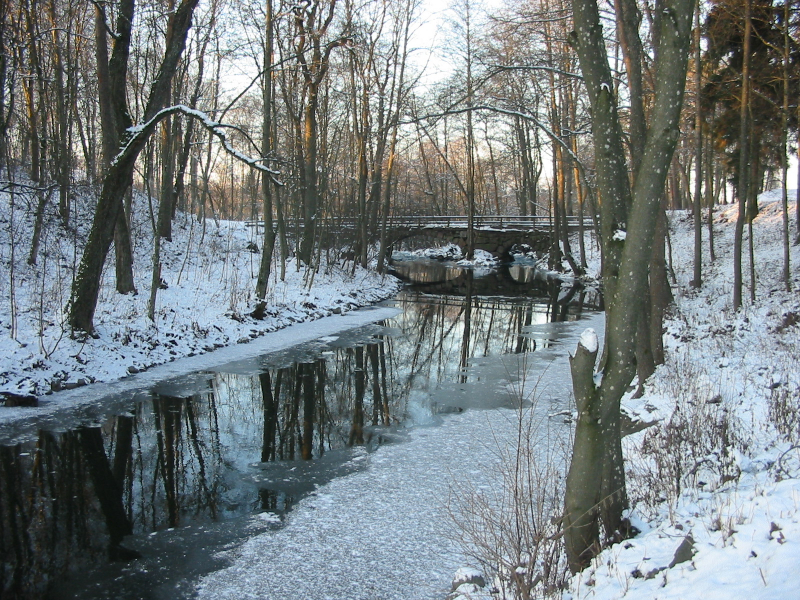
https://www.wikidata.org/ -
The Lotta River (Finnish: Luttojoki or Lutto, Northern Sami: Lotto or Lohttu, Skolt Sami: Ltt, Russian: оттa, and Norwegian: Lotta) is a river in the Tuloma's watershed. It runs through the eastern portions of the Finnish municipalities of Inari and Sodankylä, as well as the southern part of Pechenga in Russia's Murmansk Oblast.
The entire Lotta River was inside Finland's boundaries before the Russians took over the Pechenga region. The Lotta begins at Lake Lutto, a small lake in the village of Saariselkä's northern part. The river runs eastward from there, occasionally near the Inari-Sodankylä boundary. It enters Russia at Raja-Jooseppi, bends northeast, and empties into the Verkhnetulomskoye Reservoir, which is drained by the river Tuloma.
The Lotta is the river's most important tributary on the Finnish side of the border. The characteristic of the rivers in this country is that the two sides are tall pine trees, which shade the whole sky. This is also one of the great advantages when tourists choose a place to travel. This is considered one of the longest rivers in Finland.
Length: 190 km
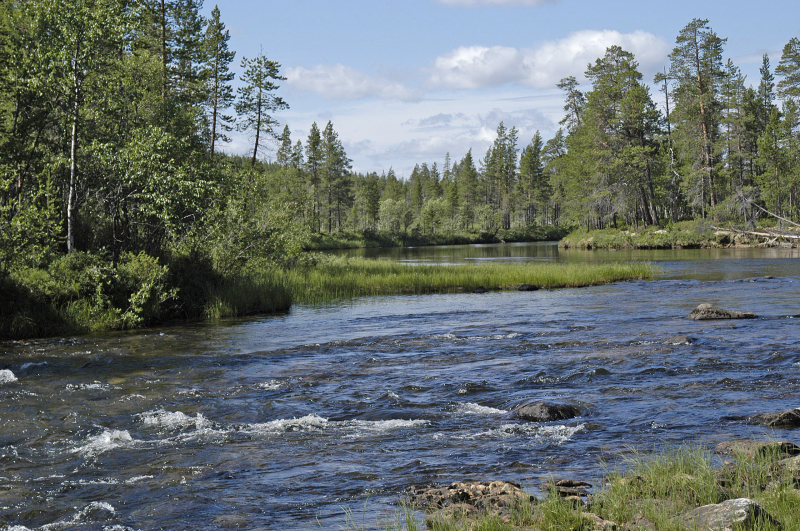
https://en.wikipedia.org/wiki/Lotta_(river) 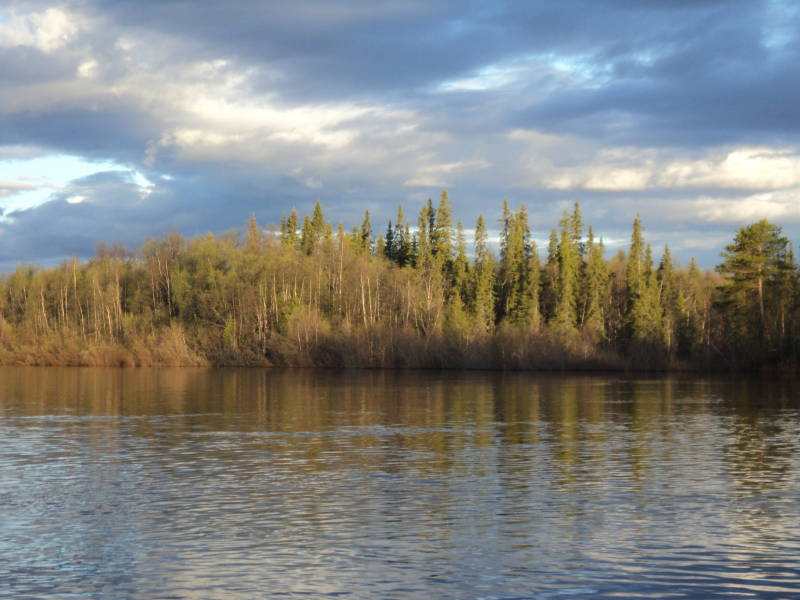
https://en.wikipedia.org/wiki/Lotta_(river) -
The Paatsjoki River (Finnish: Paatsjoki, Skolt Sami: Paajokk, Northern Sami: Báhaveaijohka, Norwegian: Pasvikelva, Swedish: Pasvik älv, Russian: а or атсoоки, Paz or Patsoyoki) runs through Finland, Norway, and Russia. Except from 1920 to 1944, when it flowed along the Finland–Norway boundary, the river has marked sections of the Norway–Russia border since 1826.
The Paatsjoki River travels from Finland's enormous Lake Inari through Norway and Russia before emptying into the Bkfjorden (which then flows into the Varangerfjorden and ultimately the Barents Sea), not far from Kirkenes. The river is 145 kilometers (90 miles) long and has a watershed of 18,404 square kilometers (7,106 square miles).
Along the river are a number of hydroelectric plants known as the Paatsjoki River Hydroelectric Plants. The river offers excellent fishing for Atlantic salmon, but anglers must be careful not to breach the international boundary with their lines. This place is most beautiful in autumn. When the foliage turns yellow, the scene becomes more poetic. The yellow color of the leaves contrasts with the green of the water reflecting the sky like a large shimmering mirror. This is considered one of the longest rivers in Finland.
Length: 145 km
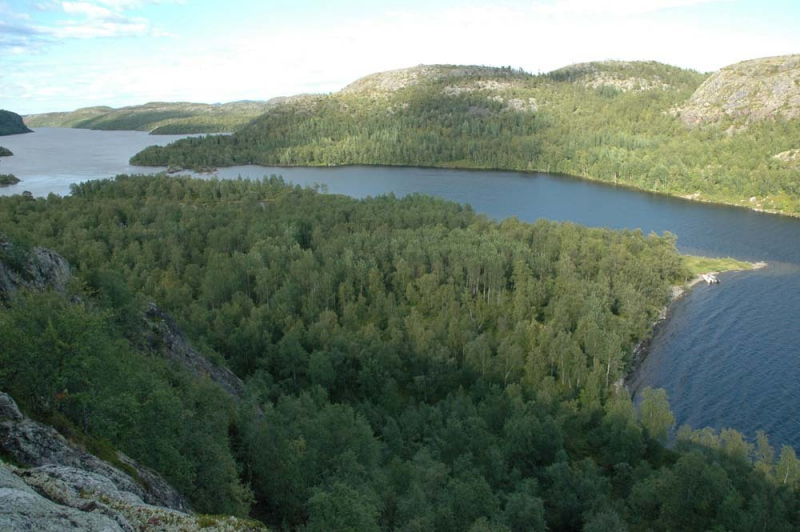
https://en.wikipedia.org/wiki/Paatsjoki 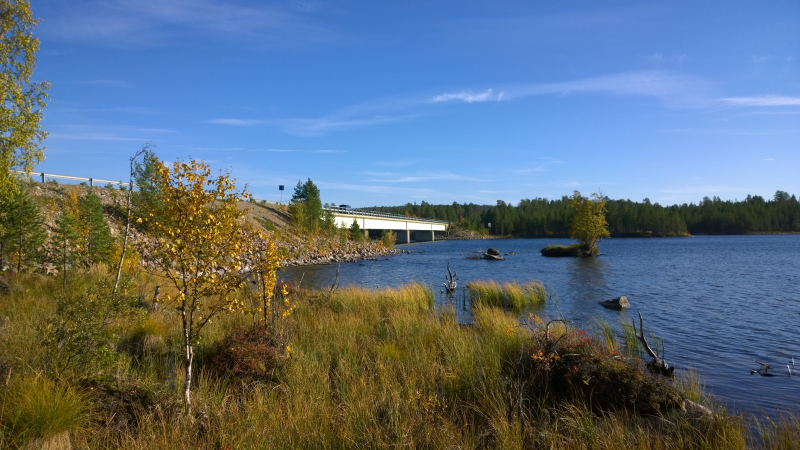
https://en.wikipedia.org/wiki/Paatsjoki -
The Näätämö River (Finland) or Neiden is a river that flows north of Lake Inari in Finland's Lapland. It runs from Inari Municipality's Lake Iijärvi via Norway's Sr-Varanger Municipality and into the Neidenfjorden, a branch of the larger Varangerfjorden.
The Näätämö River, a section of the river in Finland, is about 50 kilometers (31 miles) long and lowers around 130 meters (430 feet) from Lake Iijärvi's height (193 metres or 633 feet above sea level). The river expands into lakes at numerous locations, the biggest of which are Lakes Kaarttilompolo, Vuodasluobal, and Opukas.
The Neiden is Norway's third most prolific salmon river in terms of yearly capture. Indigenous species include Atlantic salmon, lake trout, sea trout, graylings, and pike. The water in the river flows quite fast. But that is also the reason here often take place boat racing competitions of local people. But if you want to participate, make sure you have mastered the rules and safety skills to avoid unfortunate accidents.
Length: 100 km
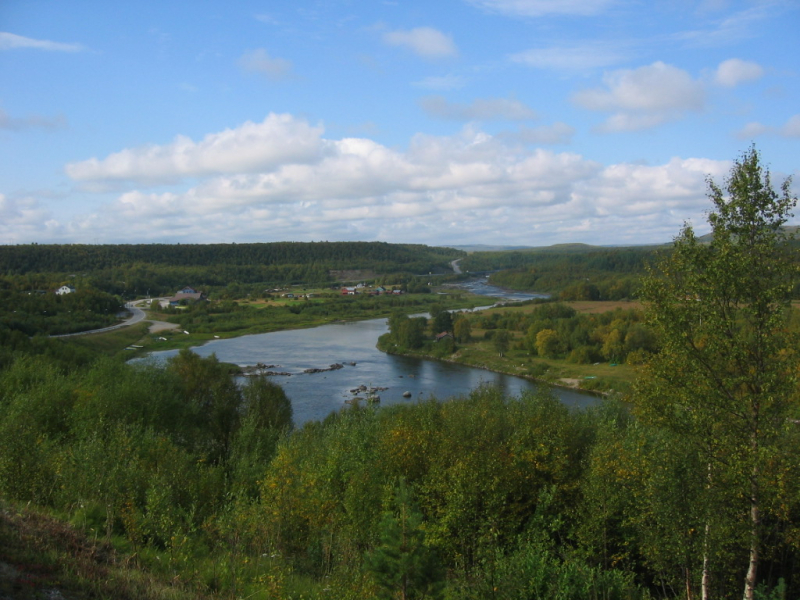
https://en.wikipedia.org/ 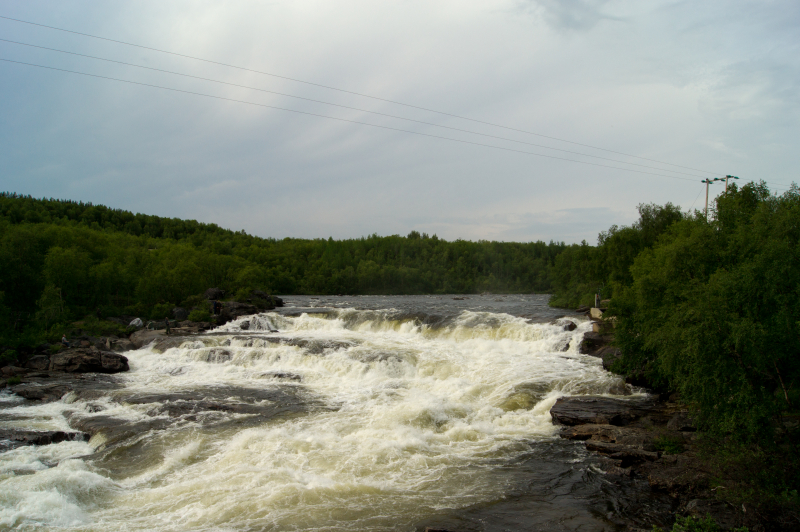
https://en.wikipedia.org/































